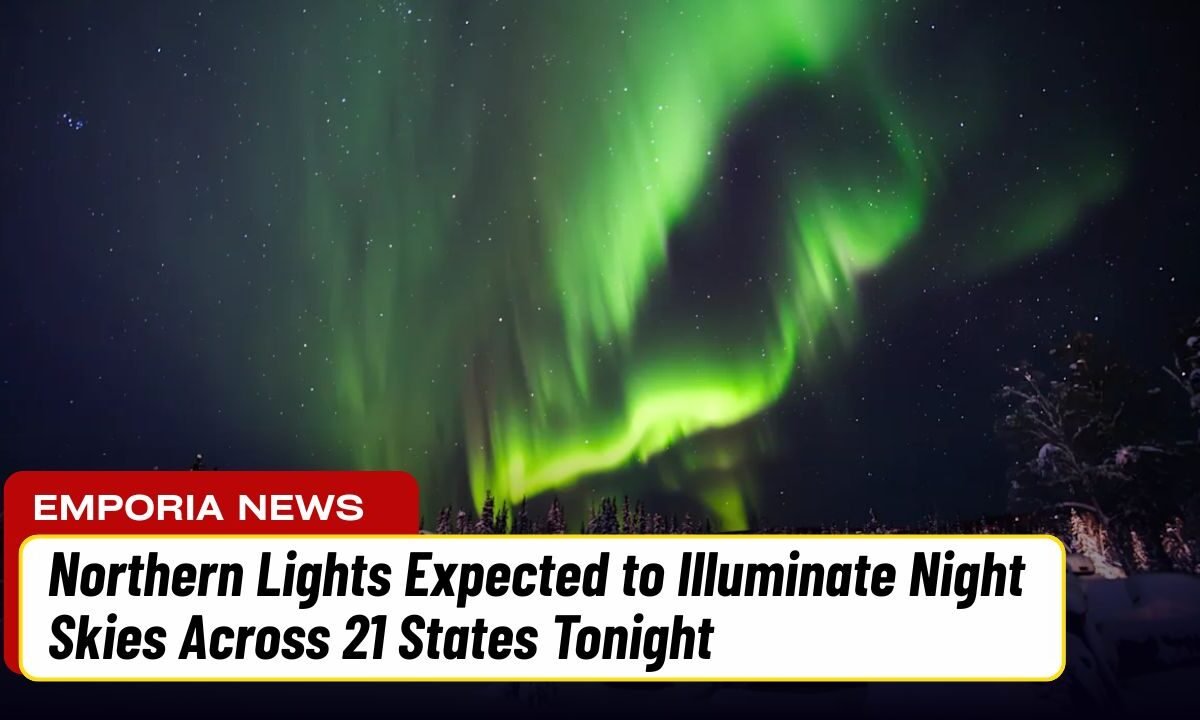A powerful solar storm is headed toward Earth beginning Tuesday, Nov. 11, and forecasts show that the vivid display of the aurora borealis (also known as the northern lights) may light up skies in nearly two dozen U.S. states.
According to the National Oceanic and Atmospheric Administration (NOAA), at least 21 states may be in position to witness this rare spectacle.
Why is this Happening?
The spectacular light display occurs when charged particles ejected from the sun interact with Earth’s magnetic field and atmosphere.
In this instance, the solar storm — prompted by one or more large coronal mass ejections (CMEs) — is driving geomagnetic activity that makes auroras visible far farther south than usual.
When and Where Can You See it?
- The best viewing window is from around 6 p.m. to 6 a.m. Central Time on Nov. 11–12.
- The states that fall within the forecasted “view-line” for the aurora include:
- Alaska
- Idaho
- Illinois
- Indiana
- Iowa
- Maine
- Massachusetts
- Michigan
- Minnesota
- Montana
- Nebraska
- New Hampshire
- New York
- North Dakota
- Ohio
- Pennsylvania
- South Dakota
- Vermont
- Wyoming
- Washington
- Wisconsin
Viewing Tips for Maximum Impact
- Find a north-facing horizon, away from city lights and large sources of light pollution.
- Use your smartphone camera – often it can pick up faint auroras your eyes may miss.
- Allow your eyes to adjust to the dark (about 30 minutes) to enhance night‐vision contrast.
- Check the sky’s clarity – cloud cover can mask the lights.
- Keep in mind: even within the view line, visibility is not guaranteed — weather, light pollution, and geomagnetic conditions all play a role.
If you happen to live in one of the 21 U.S. states under this aurora forecast, you may be in for a rare and memorable spectacle.
The convergence of a strong solar storm, favourable viewing times, and the right conditions make this a standout opportunity to witness the northern lights from farther south than usual.
Whether you’re an avid sky-watcher or simply curious, it’s worth stepping outside once darkness falls to see if the sky will dance tonight.
FAQs
What exactly causes the aurora borealis?
The aurora occurs when charged particles released from the sun travel toward Earth and collide with atoms in Earth’s upper atmosphere, creating shimmering lights.
Is it safe to go outside during a solar storm?
Yes — watching the northern lights is safe for people. However, strong geomagnetic storms can impact satellites, radio communications, and power systems, though direct effects on individuals outdoors are negligible.
Can I see the aurora from anywhere in the U.S.?
Not always. While this event extends visibility further south than usual, the best chances remain in the states listed in the forecast. If you’re outside that list or in light-polluted areas, visibility may be limited or not possible.




